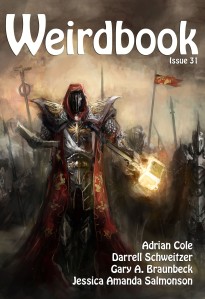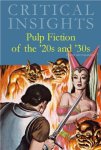 Halloween 2015 marked the launch of Thinking Horror, a new non-fiction journal co-edited by s.j. bagley and Simon Strantzas, which focuses on horror and philosophy. The first issue is themed “Horror in the Twenty-First Century,” and I’m delighted to have an essay in it. My piece is entitled “Against Nature,” and is about the sorrows of naturalism and the merits of flash fiction for horror, touching on fiction by Thomas Ligotti and Laura Ellen Joyce, as well as art by Amy Bennett and Gregory Crewdson.
Halloween 2015 marked the launch of Thinking Horror, a new non-fiction journal co-edited by s.j. bagley and Simon Strantzas, which focuses on horror and philosophy. The first issue is themed “Horror in the Twenty-First Century,” and I’m delighted to have an essay in it. My piece is entitled “Against Nature,” and is about the sorrows of naturalism and the merits of flash fiction for horror, touching on fiction by Thomas Ligotti and Laura Ellen Joyce, as well as art by Amy Bennett and Gregory Crewdson.
Frankly I’ve been excited ever since Thinking Horror was announced. It’s right up my alley as a reader, and it features a ton of articles and interviews that look outstanding. Even better news for all interested in such things, this journal is the initial offering of TKHR, which will be publishing a variety of works on contemporary horror, from further themed projects to other delights that are yet to be revealed. You can purchase a print copy of Volume One from Amazon, and an electronic version is just around the corner.
 September saw the release of Weirdbook 31, the first issue in the revival of Weirdbook, a classic publication. I aspired to publication in its pages during it’s previous run, and I’m delighted to appear in this magazine now. It’s chock-full of good horror, fantasy, baroque fantasy, weird horror, etc., including (if I may be so immodest) a fable of my own devising, entitled “Wolf of Hunger, Wolf of Shame.” While this is “issue 31” of a magazine, note that it’s 160 pages, almost all of which are fiction, so it can hang with plenty of anthologies out there! You can pick up a copy at Amazon, or directly from Wildside Press.
September saw the release of Weirdbook 31, the first issue in the revival of Weirdbook, a classic publication. I aspired to publication in its pages during it’s previous run, and I’m delighted to appear in this magazine now. It’s chock-full of good horror, fantasy, baroque fantasy, weird horror, etc., including (if I may be so immodest) a fable of my own devising, entitled “Wolf of Hunger, Wolf of Shame.” While this is “issue 31” of a magazine, note that it’s 160 pages, almost all of which are fiction, so it can hang with plenty of anthologies out there! You can pick up a copy at Amazon, or directly from Wildside Press.
Of late I’ve been busy enough that under-the-radar has been more necessity than convenience, but I have been reading various things. I’d like to point your attention to Orrin Grey’s new short story collection, Painted Monsters. It’s a fine book, and I hope to post a writeup down the road. I’d also like to highlight Molly Tanzer’s forthcoming novel, The Pleasure Merchant, which I had the pleasure of hearing an excerpt from earlier this year at World Horror. It’s gonna be fab, and I can’t wait to read it.






